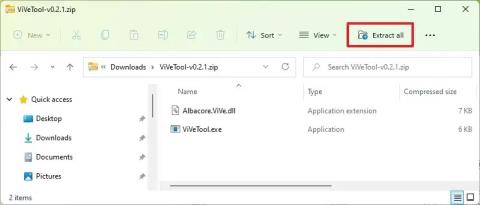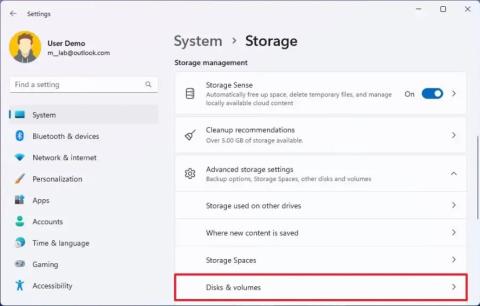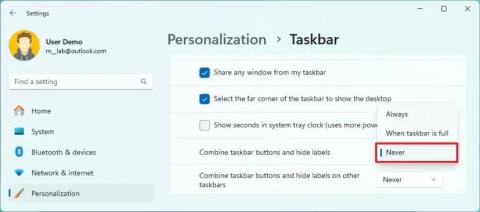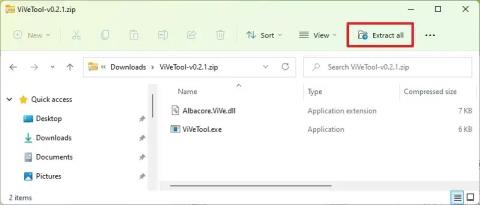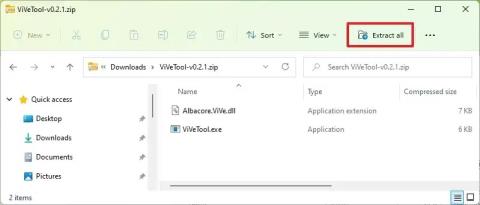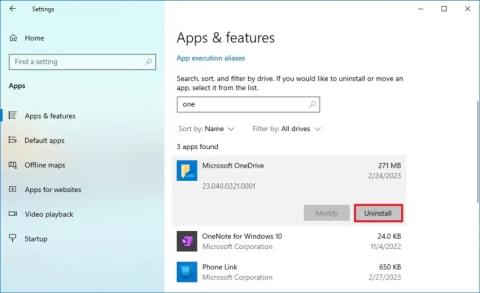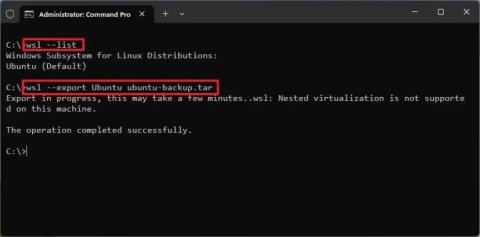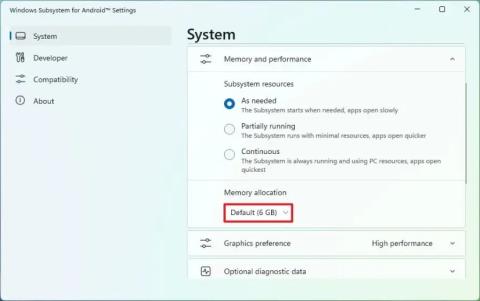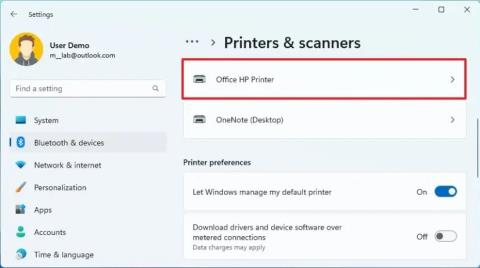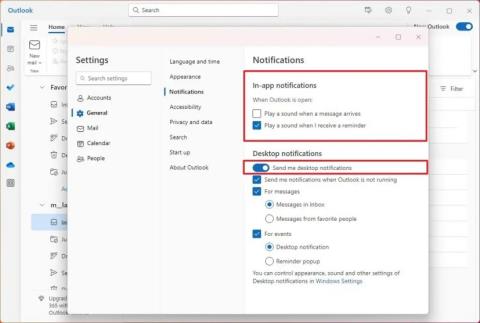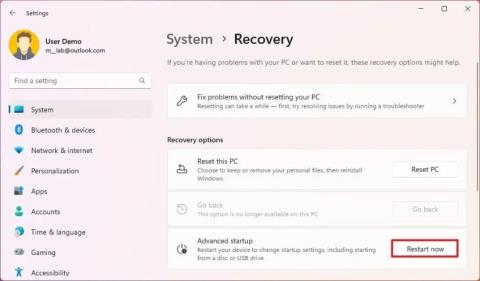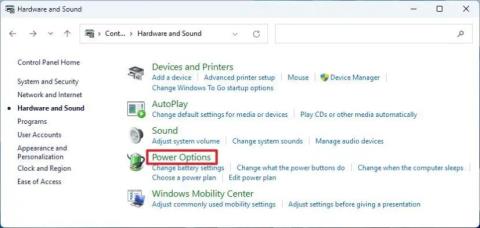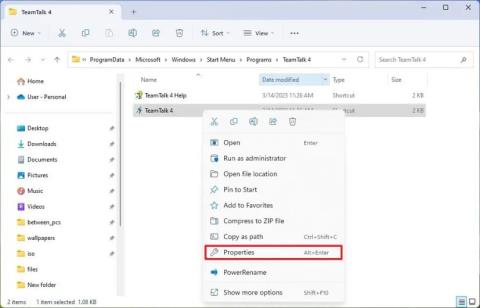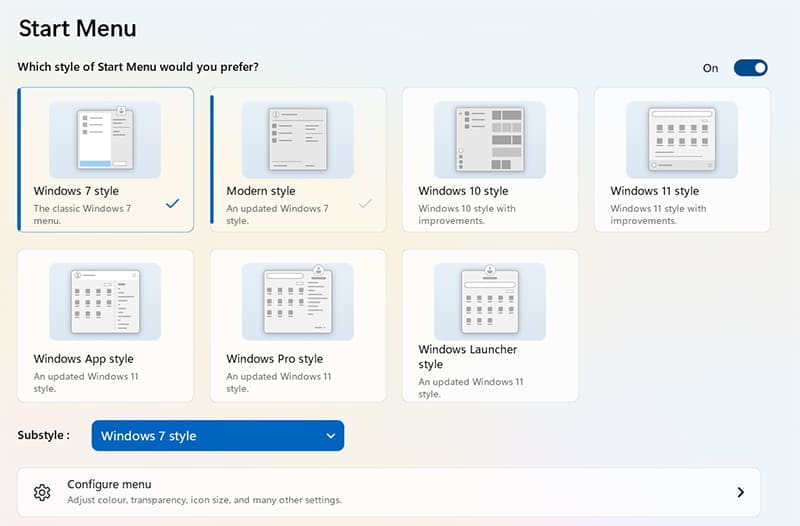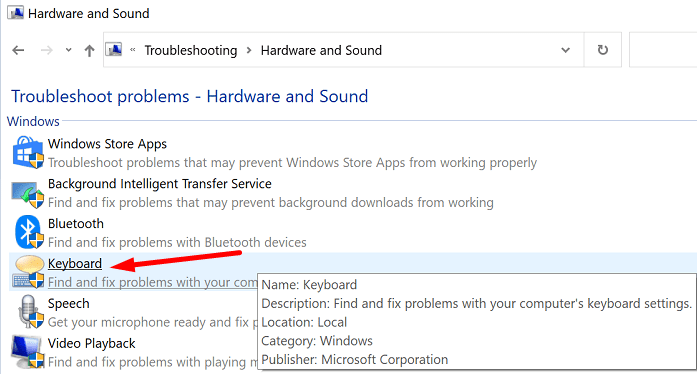Windows 11 fait le buzz depuis son annonce il y a quelques mois. Les initiés et les bêta-testeurs ont beaucoup de points positifs à dire et la nouvelle interface utilisateur et les nouvelles fonctionnalités semblent bien convenir à tout le monde. En tant que tel, Windows 11 apporte de nombreuses modifications aux fonctionnalités existantes du système d'exploitation, parmi lesquelles la nouvelle recherche Windows. La recherche est désormais plus complète, plus rapide et plus efficace. Si vous souhaitez utiliser Windows Search, voici tout ce que vous devez savoir à ce sujet. Commençons.
Contenu
Quoi de neuf dans la recherche Windows 11 ?
Windows 11 est livré avec des tonnes d'améliorations sous le capot de la recherche, cependant, il n'y a pas beaucoup de changements notables dans le fonctionnement externe de la recherche Windows. Néanmoins, vous pouvez vous attendre aux nouveaux changements suivants avec Windows Search.
- Nouvelle icône de la barre des tâches
- Recherche de type de fichier dédié
- Paramètres de recherche accessibles depuis le menu Démarrer
- Prise en charge de la recherche dans le cloud en conjonction avec les services de stockage dans le cloud
- Options d'indexation complètes
- Des résultats plus rapides
- Indexation efficace avec une faible utilisation de la batterie sur les appareils mobiles
Et plus. Au fur et à mesure que vous explorez Windows Search dans Windows 11, vous trouverez de minuscules nouveaux détails dans chaque aspect de la fonctionnalité.
Connexe : Comment partager des fichiers et des dossiers sur Windows 11
Raccourci clavier de recherche de Windows 11

Vous pouvez utiliser Windows + Ssur votre clavier pour afficher la recherche Windows directement sur votre système. Vous pouvez continuer à taper pour commencer à rechercher sur votre système des applications, des fichiers et des dossiers pertinents. De plus, appuyez sur Entrée sur votre clavier pour ouvrir le premier résultat de recherche sur votre PC.
Connexe : Comment activer la virtualisation dans le BIOS sous Windows 11 ou 10
Comment utiliser la recherche Windows
Vous pouvez utiliser Windows Search en utilisant les méthodes suivantes ci-dessous. Chaque méthode a ses propres avantages et avantages, donc selon le fichier que vous recherchez, vous pouvez utiliser l'une des méthodes ci-dessous.
Appuyez sur la touche Windows de votre clavier pour ouvrir le menu Démarrer. Vous pouvez également cliquer sur l'icône dans votre barre des tâches.

Une fois ouvert, commencez à taper le nom du fichier/programme que vous recherchez, le fichier/dossier/programme devrait apparaître automatiquement dans les résultats de la recherche. Si vous ne voyez pas votre fichier en haut, essayez de cliquer sur l'une des catégories ci-dessous pour élargir les résultats de votre recherche.

Une fois trouvé, cliquez sur le résultat de la recherche pour l'ouvrir. Vous pouvez également cliquer sur la flèche pour afficher plus de détails à ce sujet. Et c'est tout! Vous aurez maintenant utilisé la recherche Windows à partir du menu Démarrer.
Connexe : Comment mettre à jour les pilotes sur Windows 11
Utiliser le raccourci clavier
Appuyez Windows + Ssur votre clavier pour ouvrir la recherche. Passez maintenant au type de fichier souhaité si nécessaire.

Tapez votre terme de recherche. Cliquez sur la zone de texte si nécessaire.

Windows va maintenant rechercher votre fichier/dossier et les résultats seront affichés sur votre écran. Vous pouvez cliquer et développer les catégories ci-dessous pour afficher plus de résultats.

De plus, si vous souhaitez afficher plus de détails sur un fichier ou un programme, vous pouvez cliquer sur la flèche à côté de celui-ci. Vous aurez maintenant utilisé Windows Search à l'aide du raccourci clavier.
Utilisation de l'explorateur de fichiers
Appuyez Windows + Esur votre clavier pour ouvrir l'explorateur de fichiers. Accédez au lecteur/répertoire/dossier que vous souhaitez rechercher. Une fois ouvert, cliquez sur le champ de recherche dans le coin supérieur droit de votre écran.

Tapez votre terme de recherche maintenant et appuyez sur Entrée sur votre clavier.

Windows va maintenant rechercher votre terme de recherche dans le répertoire actuel, puis afficher tous les résultats sur votre écran. Vous pouvez maintenant cliquer et lancer le fichier.

Vous pouvez également cliquer dessus avec le bouton droit de la souris et sélectionner « Ouvrir l'emplacement du fichier » pour visiter son répertoire actuel sur votre stockage local.

De plus, vous pouvez utiliser les flèches déroulantes en haut pour trier les résultats de votre recherche afin de trouver plus facilement votre fichier/dossier/programme.

Et c'est tout! Vous aurez maintenant utilisé la recherche Windows via l'explorateur de fichiers.
Comment augmenter l'indexation pour la recherche Windows
La recherche Windows par défaut ne recherchera que les fichiers et les termes de recherche dans certains répertoires et chemins. Ces chemins par défaut couvrent les répertoires les plus courants sous Windows, tels que le menu Démarrer, les documents, la musique, les images, etc. Si vous souhaitez augmenter l'étendue de l'indexation sur Windows 11, vous pouvez utiliser le guide ci-dessous pour commencer.
Appuyez Windows + isur votre clavier pour ouvrir l'application Paramètres. Cliquez maintenant sur « Confidentialité et sécurité » sur votre gauche.

Cliquez sur « Recherche de Windows » sur votre droite.

Cliquez et développez « Rechercher mes fichiers ».

Sélectionnez « Amélioré ».

Maintenant, si vous souhaitez exclure des dossiers de l'indexation, cliquez sur « Ajouter un dossier exclu ».

Remarque : Windows a ajouté certains dossiers par défaut. Nous vous recommandons de continuer à exclure ces dossiers pour éviter une utilisation inutile des ressources pour indexer les fichiers système.
Une fois que vous avez exclu tous les dossiers, nous pouvons maintenant commencer à indexer tous vos lecteurs. Cliquez sur « Options d'indexation avancées » en bas.

Cliquez sur 'Modifier'.

Cochez les cases de vos lecteurs maintenant.

Cliquez sur 'Ok' une fois terminé.

Cliquez sur 'Fermer'. Et c'est tout! Vous aurez maintenant augmenté vos emplacements d'indexation dans Windows Search. Si vous utilisez un ordinateur portable, vos nouveaux emplacements seront indexés une fois que votre unité est connectée à l'alimentation.
Connexe : Comment créer un point de restauration dans Windows 11
Utiliser les options de recherche
Les outils de recherche existent depuis un certain temps dans l'explorateur de fichiers et ils vous permettent de gérer vos résultats de recherche avec beaucoup plus d'efficacité. Cela peut vous aider à trouver des fichiers dont vous ne vous souvenez pas du nom et dont vous ne vous souvenez que de quelques détails. Les outils de recherche ont maintenant été renommés en « Options de recherche » dans Windows 11 et vous obtenez désormais un menu déroulant pour vos options à la place. Commencez par explorer vos options et recherchez un terme dans l'explorateur de fichiers comme vous le feriez normalement. Une fois les résultats de votre recherche affichés, vous devriez trouver « Options de recherche » en haut de votre écran. Utilisez maintenant les options suivantes pour filtrer vos résultats de recherche en conséquence.
- Tous les dossiers : recherchez votre terme de recherche dans tous les dossiers du lecteur/de la partition actuelle.
- Dossier actuel : recherchez uniquement le dossier actuel pour votre terme de recherche.
Vous pouvez également dicter la façon dont vos résultats de recherche sont triés. Cela peut vous aider à trouver des fichiers volumineux ou des fichiers en fonction des types de fichiers. Utilisez l'une des options ci-dessous
- Date de modification : utilisez cette option pour trier vos résultats en fonction de l'heure à laquelle ils ont été créés sur votre stockage local.

- Type : vous pouvez utiliser cette option pour trier vos fichiers par type. Vous pouvez rechercher des fichiers de calendrier, des dossiers, des jeux, des images, de la musique, etc. Vous pouvez choisir parmi plus de 23 types de fichiers différents pour trier les résultats de votre recherche.

- Taille : utilisez cette option pour filtrer vos fichiers en fonction de leur taille. Vous aurez le choix parmi les options suivantes.

-
- Vide : 0 ko
- Minuscule : 0 ko à 16 ko
- Petit : 16 ko à 1 Mo
- Moyen : 1 Mo à 128 Mo
- Grand : 128 Mo à 1 Go
- Huge: 1GB to 4GB
- Gigantic: Files greater than 4GB in size
Additionally, you get the following more options to filter your search results. These options will dictate where and which files will be searched by Windows. Simply click on the option to activate or deactivate it.
- System files
- Zipped (compressed) folders
- File contents
And that’s how you can use Search Options in Windows 11 to your advantage. We have a few more tips to help you make the most of Windows Search in Windows 11. You can use the section below to get started.
Related: How to Uninstall Apps on Windows 11
Tips to use Windows Search to your advantage
Windows Search has a few certain hidden shortcuts and key terms that can directly help you filter or sort your search results depending on your preferences. Here are a few tips to help you get the most out of Windows Search on Windows 11.
Find large files
You can find large files on a drive or in a folder easily by using the command ‘size:’. You can then use one of the terms from your Search Options to filter your files and display them based on their size. For example, if you wish to search for files larger than 4GB in size in the current directory then you can use the following command.
size:gigantic

Similarly, you can further filter your search results using Search Options to identify large movies, pictures, calendar files, games, or more taking up space on your PC.
Find file types
Similar to the command above, you can use the ‘kind:’ parameter to find certain files in the current directory. The ‘kind’ parameter will allow you to look for calendar files, text documents, pictures, videos games, and more. When using the kind parameter this way you are not restricted to Windows’s predefined categories, instead you can define specific file extensions as well to find them on your PC as shown below.
kind:.exe

The command above will help you look for executables in the current directory.

Similarly using the command below will help you find PDF files in the selected directory.
kind:.pdf

And that’s it! You can use these commands to find certain files on your PC using Windows Search.
Related: How to Hide Badges on Taskbar Icons on Windows 11
Find files by date
You can also use the ‘date:’ parameter to look for files created on a certain date. Additionally, this command can be used in conjunction with Boolean filters below to find files created or modified before or after a certain date on your PC. For example, if looking for a file created on the 1st of January 2020, then you can use the following command below.
date: 1/1/2020

Similarly if looking for a file created on the 1st January 2021, then you can use the following command.
date: 1/1/2021
Use Boolean Filters
Boolean filters can help you search multiple terms simultaneously or in conjunction with each other when using Windows Search. Here are the following Boolean filters that you can use to your advantage.
The ‘AND’ parameter
You can use the AND parameter to search for two search terms together. This way you can look for a file containing both the terms and not either one of them which should help you filter out unwanted results containing either of the terms. For example, if looking for a file containing the words ‘Samsung and ‘galaxy’ in its name then I can use the following term to search for your file.
Samsung AND galaxy

This will filter out files with only ‘Samsung’ and ‘Galaxy’ in their name. Files with either term will be filtered out.
The ‘OR’ parameter
The OR parameter is opposite to the AND parameter and allows you to search for files containing either of the terms in your search term. For example, if I wish to search for files with either ‘Apple’ or ‘Airpods’ in their name, then I can use the following search term.
apple OR airpods

Similarly, if I am looking for PDF and EXE files in a particular directory, then I can use the following command below.
kind:.exe OR .pdf

And that’s how you can use the OR parameter to look for multiple search terms in a single file name.
The ‘NOT’ parameter
If you are looking to filter out a certain search term or a filet type then you can use the NOT parameter. The NOT parameter will exclude the desired file type, kind, size, or name depending on your choice. For example, if in a folder full of .docx files you are looking for other file types and wish to filter them all out, then you can use the following command.
kind: NOT .docx

Similarly, if I am looking for a file that does not have ‘Apple” in its name then I can use the following search term.
NOT apple

Double Quotes
If you remember an exact term for the file that you are searching for then you can use double-quotes. This will force Windows Search to look for the exact search term with the specific formatting and case to find the file that you are looking for. For example, if looking for a file with ‘Apple 2019′ in its title then you can use the following command below.
“Apple 2019”

Parentheses
Parentheses is a Boolean filter that is usually used when you are searching file contents as well. Anything included between the parentheses () is searched for and files with either or all of the terms are displayed on your screen. For example, if looking for a file containing either ‘Apple, Samsung, Mi, Microsoft, and Dell’ or all of these terms, then you can use the following term.
(Apple Samsung Mi Microsoft Dell)

Similarly, you can use the following command if looking for multiple file types.
kind:(.exe .pdf .txt)

And that’s it! You will now have used parentheses to your advantage to look for multiple search terms in a particular file.
‘>’ and ‘<‘>
These two Boolean filters are usually used when looking for file types or when sorting your results based on a parameter. The greater than and less than parameters can be used to filter your results based on a number. For example, if looking for files dated after 1st January 2021 then you can use the following command.
date: >1/1/2021

Similarly, if looking for files less than 10GB then you can use the following command.
size: <>

You can use the greater than and less than parameters to your advantage this way and find the desired files on your system.
Related: How to Type Accents on Windows 11
Are there any Windows search alternatives?
Yes, there are a few Windows search alternatives out there developed by third parties that offer competitive indexing options and promise higher working efficiency when it comes to using your system’s resources. Windows Search, however, would still be our recommended tool for you as it has been installed natively on your system. Using a third-party tool will add additional workload to your PC unless Windows Search has been completely disabled. Hence, we recommend that you try PowerToys by Microsoft first to get a native utility on your PC that uses and enhances Windows Search instead. If that does not work out for you, you can then opt for any one of the third-party utilities listed below.
PowerToys
PowerToys is a collection of enhanced tools by Microsoft that offer you utilities like PowerToys Run (Windows Search), Color Picker, Power Renamer, and more to help increase your productivity and enhance your workflow. PowerToys Run is a spotlight-like search feature in PowerToys that uses Windows Search to index and display files on your PC. PowerToys Run gives you a more elegant way of using Search on your PC. Use the guide below to get you started.
Download and install PowerToys on your PC using the link above. Once installed, launch PowerToys from the taskbar as shown below.

Once PowerToys is launched, we recommend you click on each feature on your left and disable the ones that you don’t wish to use. PowerToys have comprehensive tools that can cause your system to behave unexpectedly if you do not know about them. Hence, disable all the features that you do not need or wish to use on your PC.

Click on ‘PowerToys Run’ on your left.

Enable the toggle at the top.

Set a custom shortcut if needed. By default, you can use Alt + Space to activate PowerToys Run.

Increase the number of search results you wish to view if needed.

Set a position for the search box if you have a multi-monitor setup.

Choose a custom theme if needed.

Additionally, PoweToys Run is highly capable and can help you access apps from within the search box itself. For example, you can enter equations in the search box, and you will automatically get a result from the calculator app as a search result as shown below.

Similarly, you can also execute commands from the search box itself. Ping is a good example that shows up in the search results as shown below.

However, if you are not going to be using these features then there is no point in having them enabled on your PC. Simply disabled the plugins in the PowerToys window as shown below.

And that’s it! You will now have configured PowerToys Run on your system as a Windows Search alternative.
Third-party apps
If PowerToys is not up to mark for you and you are looking for something a bit more comprehensive then you can check out the following Windows Search alternatives below.
We hope you were able to get familiar with Windows Search in Windows 11 using the guide above. If you face any errors or have any questions for us, feel free to reach out using the comments section below.
Can you disable Windows search in Windows 11?
No and yes. Windows does not offer a native way to disable Windows Search. However, this could be detrimental to older systems where Search could end up taking vital resources in the background that would in turn slow your system down. In such cases, and more, you can use a few workarounds to disable Windows Search in the background on Windows 11. You can use the guide below to disable Windows Search on Windows 11.
How to disable Windows search
If you wish to disable Windows Search then disabling the service is the easiest way. Follow the guide below to get you started.
Press Windows + R on your keyboard and type in the following. Press Enter on your keyboard once you are done.
services.msc

Search for a service named ‘Windows Search’ and right-click on it.

Select ‘Properties’.

Click on ‘Stop’.

Click on the drop-down menu and select ‘Disabled’.

Cliquez sur 'D'accord'.

Redémarrez votre système et Windows Search devrait maintenant être désactivé sur votre système.
En rapport:
